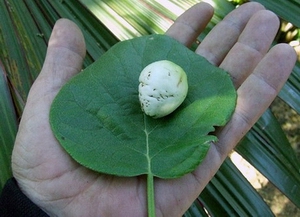 develop a wild Australian native fruit that has ten times more vitamin C than oranges into a lucrative international cash crop for Aboriginal communities.
develop a wild Australian native fruit that has ten times more vitamin C than oranges into a lucrative international cash crop for Aboriginal communities.The Kakadu plum, long used by Indigenous people as a source of traditional food and medicine, is currently harvested only in the wild in northern Australia.
However, its growing popularity as a natural source of vitamin C has driven demand, and more than 17 Australian and international companies use it in food and healthcare products. Kakadu plums also contain more than 13 times more anti-oxidants than blueberries.
A project funded by the Federal Government’s Rural Industries Research and Development Corporation will examine how to grow Kakadu plums in commercial plantations to help Australia’s fledgling bush tucker industry expand as a major Aboriginal enterprise. “The project aims to create a reliable supply of high-quality fruit by supplementing the wild crop with easily accessible orchards,” said University of Western Australia’s Dr. Liz Barbour. “The process of Kakadu plum domestication starts by investigating its genetic make-up and understanding the fruit ripening process. We will work with Aboriginal communities to provide training in collection and to establish plantings in WA and the Northern Territory.”
Kakadu plums ripen in January in Western Australia and in May at the onset of the Northern Territory dry season. They have a tart taste and are used to make jams, sauces and juices, and skin and hair care products and vitamin supplements.





